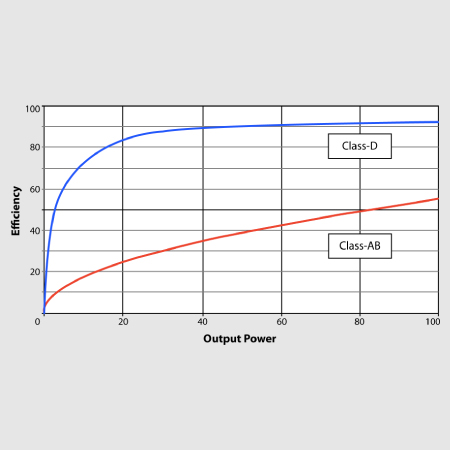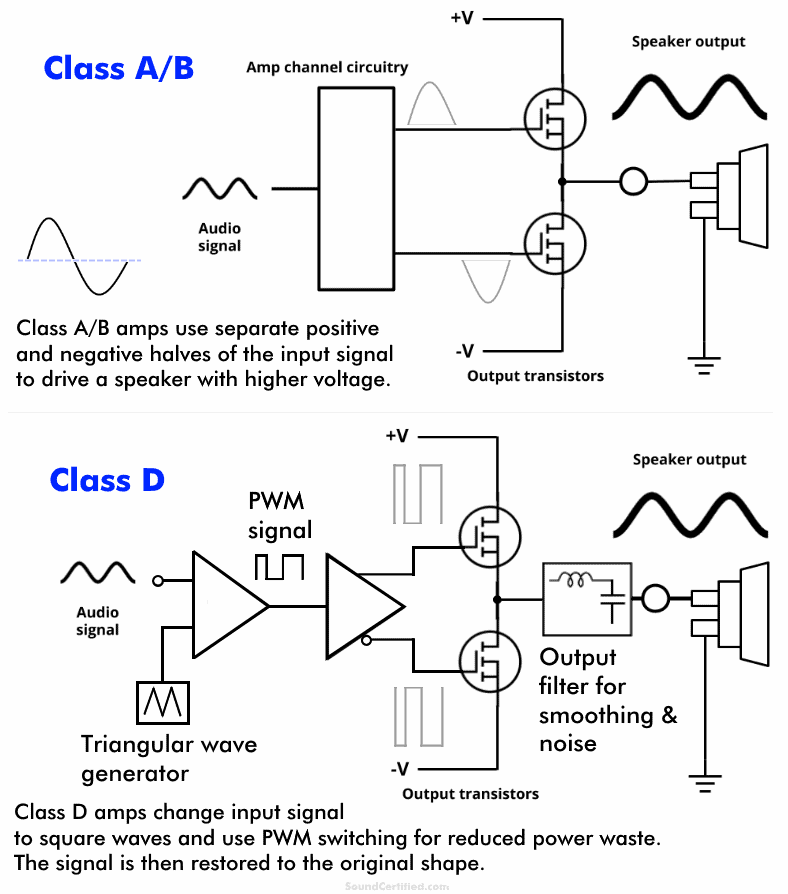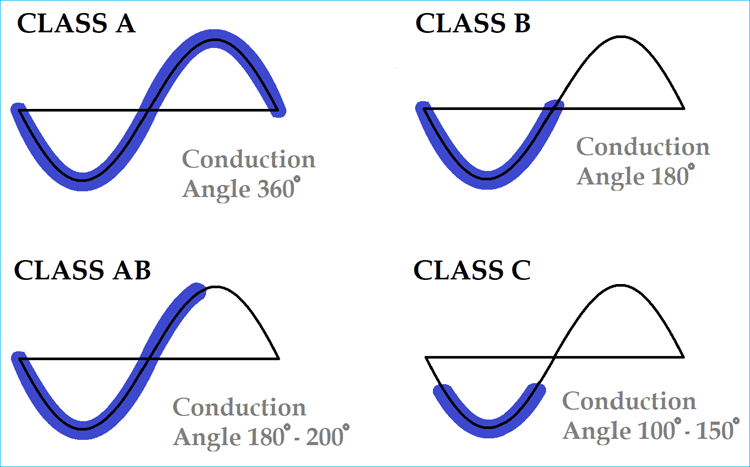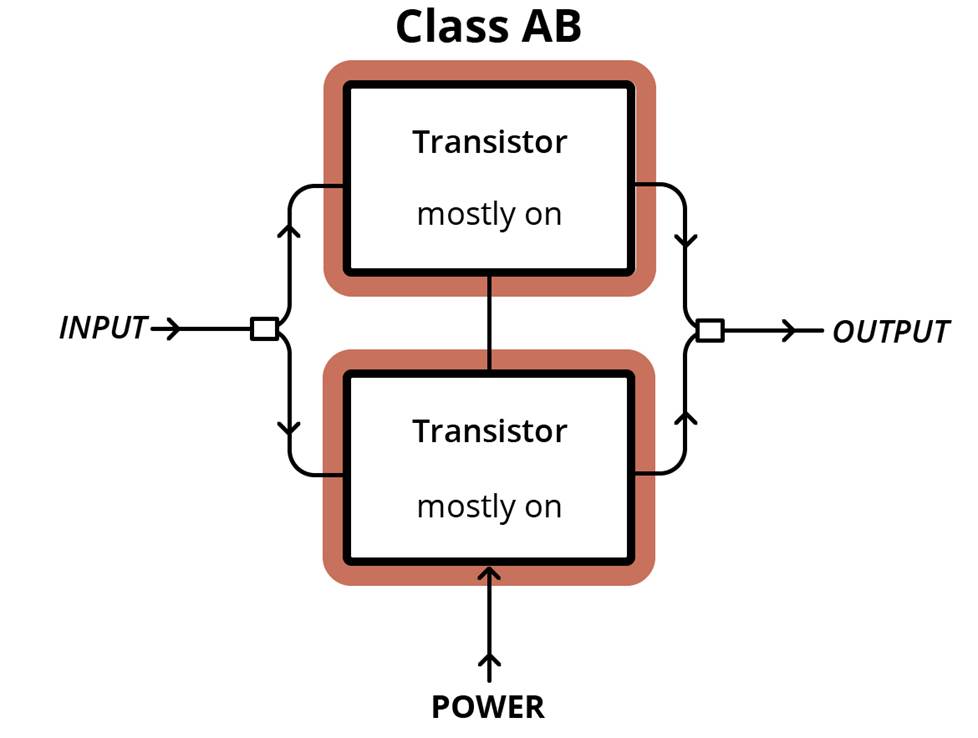class ab vs class d power consumption
0125 100 125 watts 20 eff 625 watts x 7 4375 watts. If I come across a Class D amp with a good damping factor Id be happy to try it out.

Class D Power Amplifier Power Electronics News
The other classes of operation Class B and Class AB are definitely not biased anywhere near that mid-point and thats the key to their ability to run cool and produce more power.

. High efficiencygreater than 90. It should at least be in the 50 to 100 range. Class C amplifier is tuned amplifier which works in two different operating modes tuned or untuned.
A 1000 watt amplifier for instance might be called upon to deliver up to 60 volts at a current of up to 16 amps. Class D amplifiers are significantly more efficient than Class AB amplifiers. The difference in power dissipation is a very significant 550mW.
So for example is it really OK to run a speaker with max power rating of 150W with these hypex ncore amps rated. About 6 dB extra gain in addition to saving of power and area. Class D Audio Amplifiers.
When you compare the old one with the new the old ones are more musical and even have a better 3 Dimensional stage. But class D is great for subwoofer amps and even in some amp it can be good. Been reading through the Class D amp reviews here and elsewhere and a point of confusion for me are the power ratings and their accuracy.
These class D seem to have massive power ratings. A Class D power supply is fine though. While a regular class AB amp might be 30-50 efficient a Class D amp will be 80-90 efficient - that is how much of the wall juice actually turns into music.
Class A Class B and Class D. A2 gm10 gm11ro10 ro11 gm10ro10 Equation 9 Where we assume gm10gm11 and ro10ro11. For example your idle current is 05mA and peak is 035mA from idle.
Answer 1 of 5. And Class D amplifiers are more efficient than A. So far we only mentioned biasing current but.
What Why and How Analog Devices Class B doesnt get any decent efficiency till near max signal class A is never remotely efficient ever. That compares with peak efficiencies of about 30 for Class A amplifiers and about 60 for Class AB amplifiers. The Pioneer receivers in class D sound like shit.
Maximum 80 efficiency can be achieved in radio frequency related operations. Power amps have a tough job to do particularly in live sound. The efficiency of Class C amplifier is much more than the A B and AB.
So I feel Class AB still seems to make the most sense. I have no problem at all with G or H because those are just Class AB with multiple rails. What Class AB does is fill in the gap in the middle of Class B push-pull.
Then positive peak is 05035085mA negative peak is 05-035015mA but in all of those cases current is greater than zero. Less power consumption and lower heat generation. They went from class AB to D.
Class C amplifier uses less than 180-degree conduction angle. Class D amplifiers are the best choice when it comes to power dissipation consideration because there is far less loss in power consumption when the MOSFETs are not always in the on state. Very high-power potential 400 to 500 W in a small package.
Both are depicted in figures 5 and 6. Class D amplifiers can reach peak efficiencies of 90 or greater. And dont forget that 1000 watts equal to 1 kilowatt provided by an electric radiator would probably be enough to keep your.
It doesnt take a lot to hear the difference between class AB and class D the two more common amplifier classes available - and the two in question. This is one of Pioneers main selling points of the SC-line of receivers. It is also helpful to note that decreasing the bias current of the second stage increase its gain too.
They typically market it as creates significantly less heat but Im wondering how much of a. Theoretically the maximum efficiency for a Class D amplifier is 100. The push-pull configuration with its balanced operation makes Class AB possible.
Class D is efficient and therefore cheaper yet marketing has pushed class D as. Class D Half-Bridge Topology 4. 500mW into an 8Ωload a typical class D amplifier exhibits 85 efficiency while the Class AB amplifier is only 44 efficient.
Class A conducts all the time because it is biased so. Joined Oct 10 2011. Class D amps are digital.
They use a series of pulses to generate the music which is then put through a lowpass filter to make it sound like music again. This article suggests class D at practical levels has about an order of magnitude lower power consumption than class B and class A is more than an order of magnitude worse than class B. The gain of the second stage the class-AB output stage can be written as.
The bonus is efficiency. 4375 watts - 1094 watts 328 watts greater power consumption for the Class AB amplifier vs the Class D amplifier for the same power output. Pass class AB amps sounds great in class A and B.
0125100 125 watts 80 eff 156 watts x 7 1094 watts.

Class D Power Amplifier Power Electronics News

What Does A Car Amplifier Do The Only Guide You Need

Classes Of Power Amplifiers Class A B Ab C D Amplifiers Explained

What Are The Different Types Of Audio Amplifier Classes Audioholics

What Are The Different Types Of Audio Amplifier Classes Audioholics

What Are The Different Types Of Audio Amplifier Classes Audioholics

Class Ab Amplifier Design And Class Ab Biasing

Class D Audio Amplifiers What Why And How Analog Devices

Fundamentals Of Class D Amplifiers Maxim Integrated

Amplifier Classes And The Classification Of Amplifiers

Class D Audio Amplifiers What Why And How Analog Devices

Amplifier Classes And The Classification Of Amplifiers

Class D Audio Amplifiers What Why And How Analog Devices

Transitioning From Class Ab To Class D In Automotive Audio Systems Electronic Design

Amplifier Classes And The Classification Of Amplifiers

Classes Of Power Amplifiers Class A B Ab C D Amplifiers Explained

Which Amplifier Class Is The Best How Class D Amplifier Technology Differs From Class A And Ab
